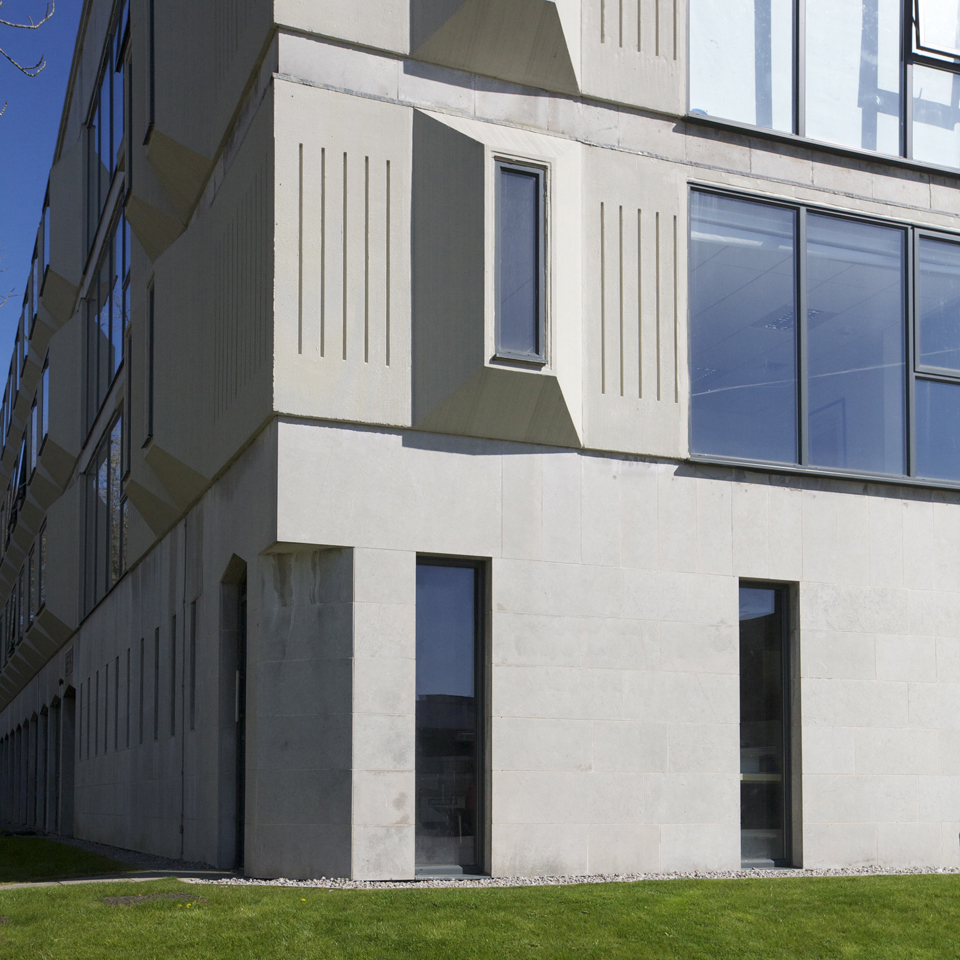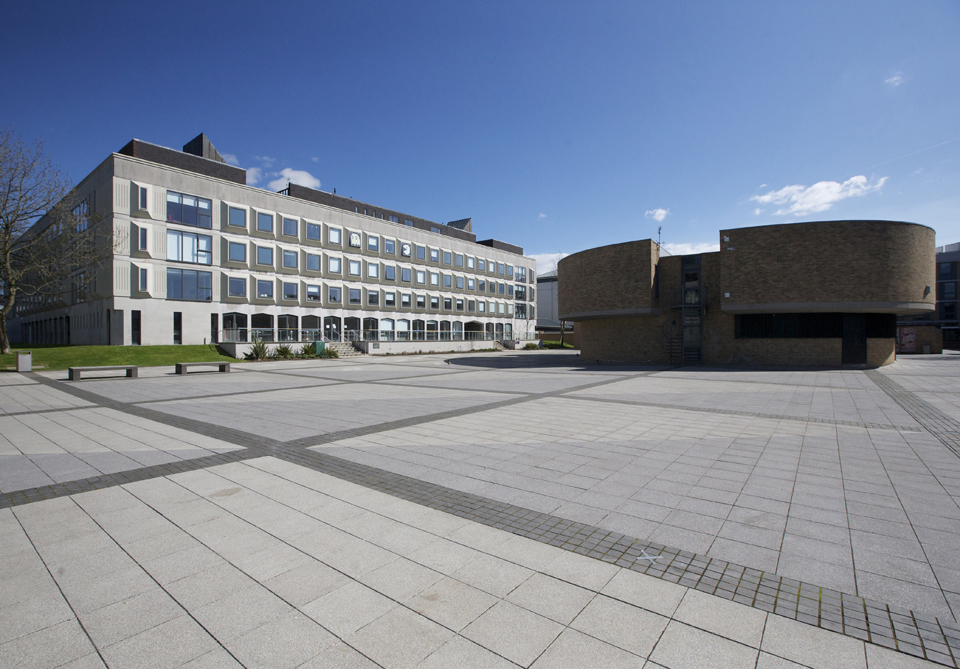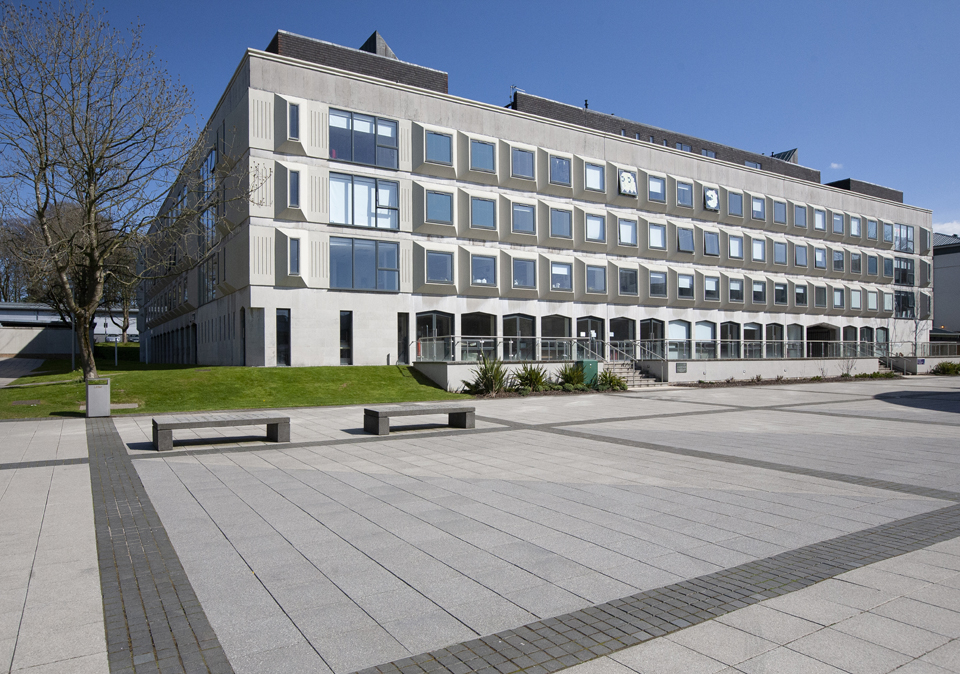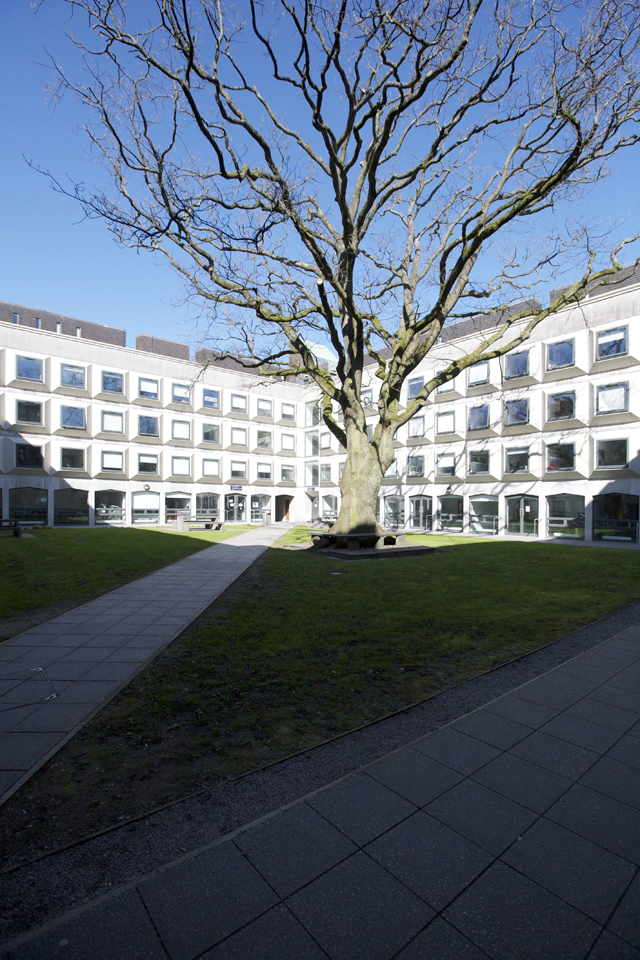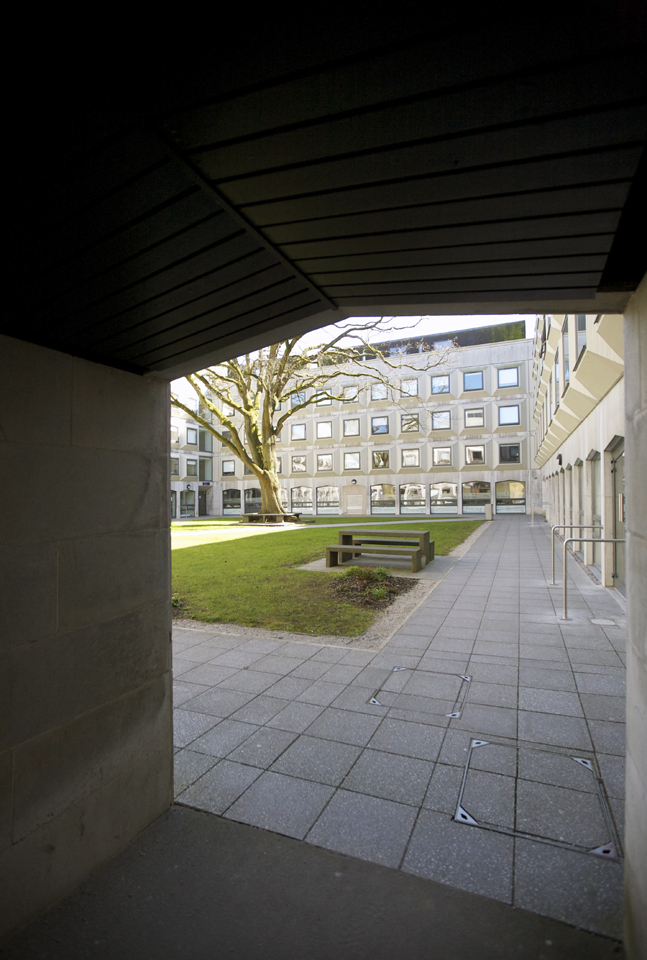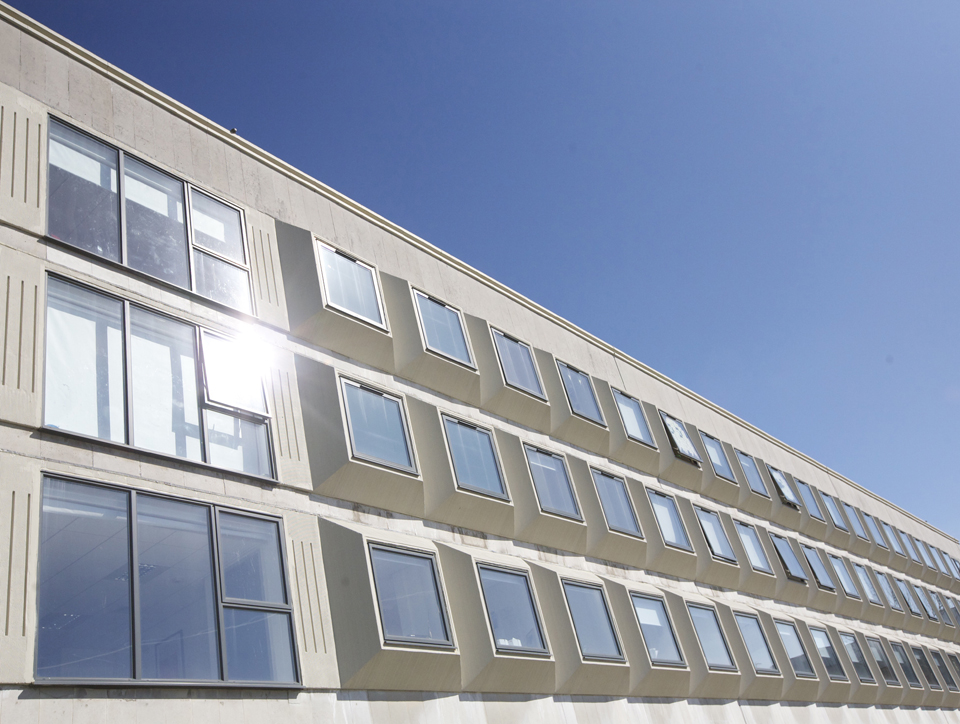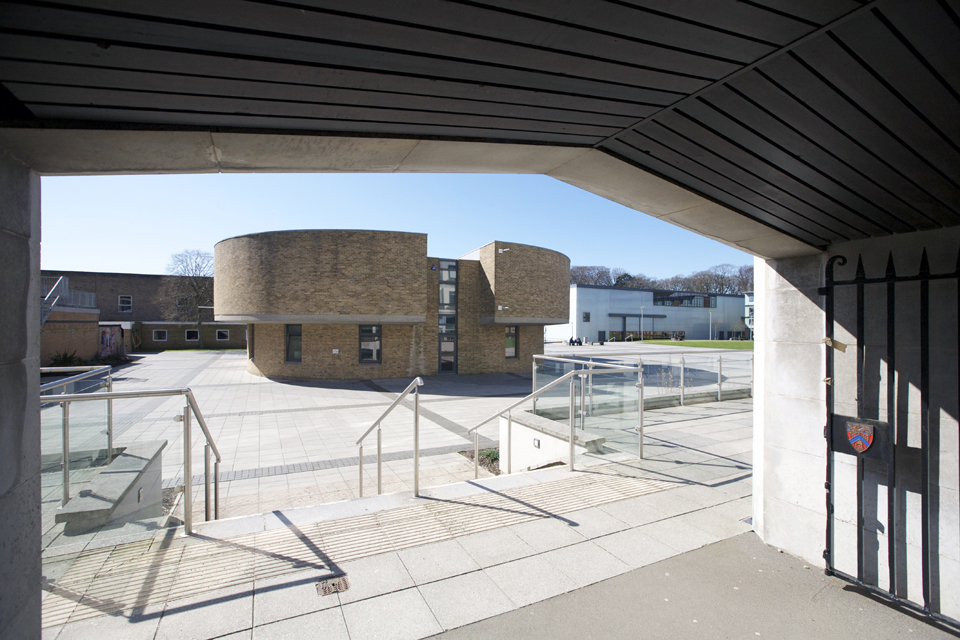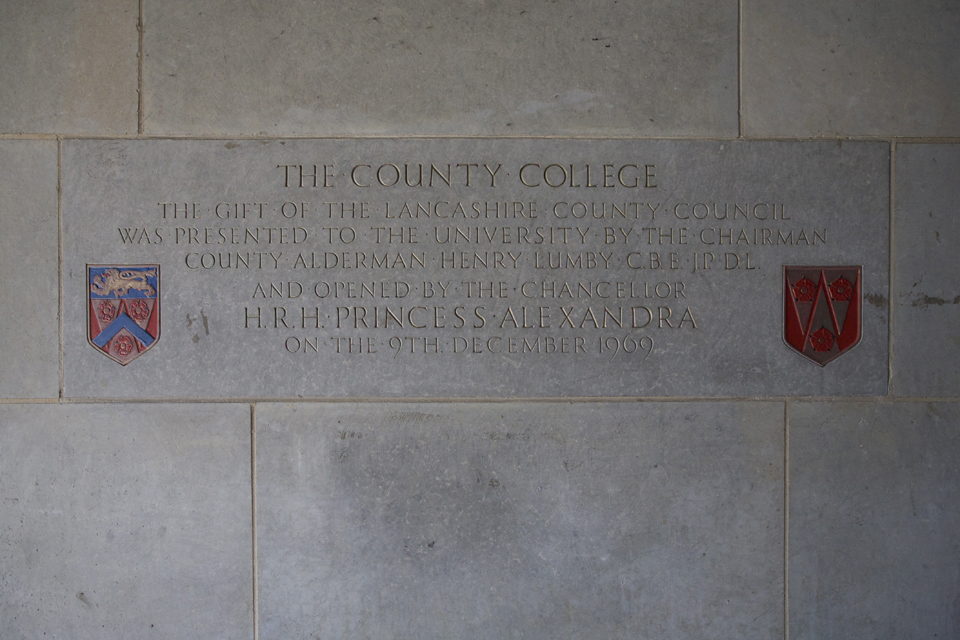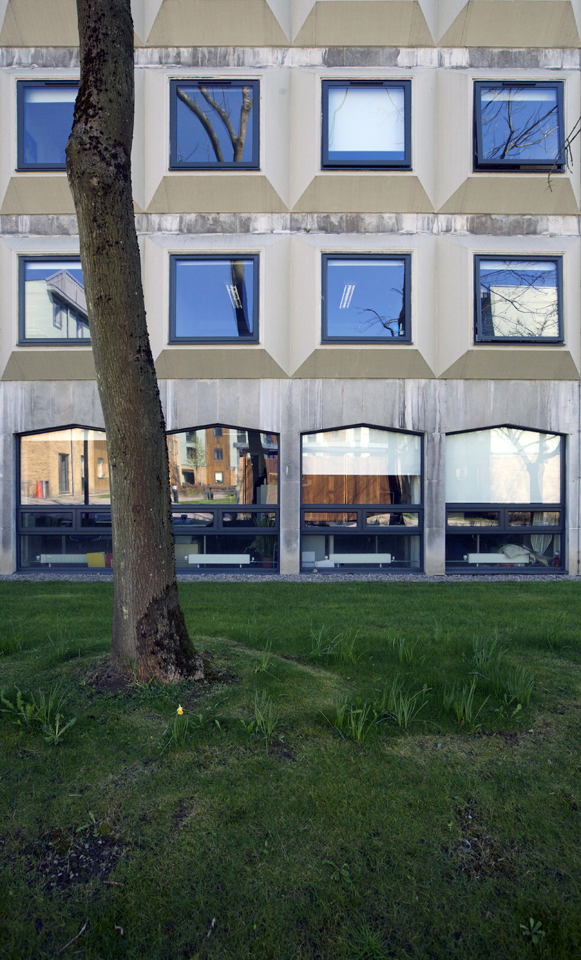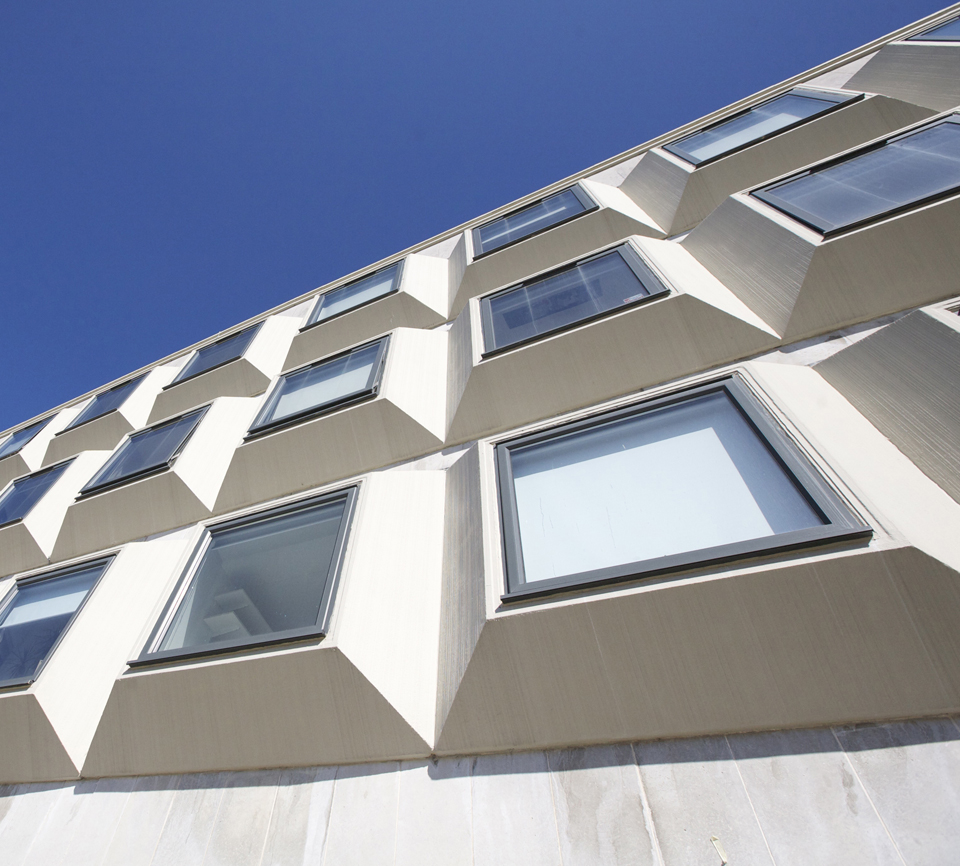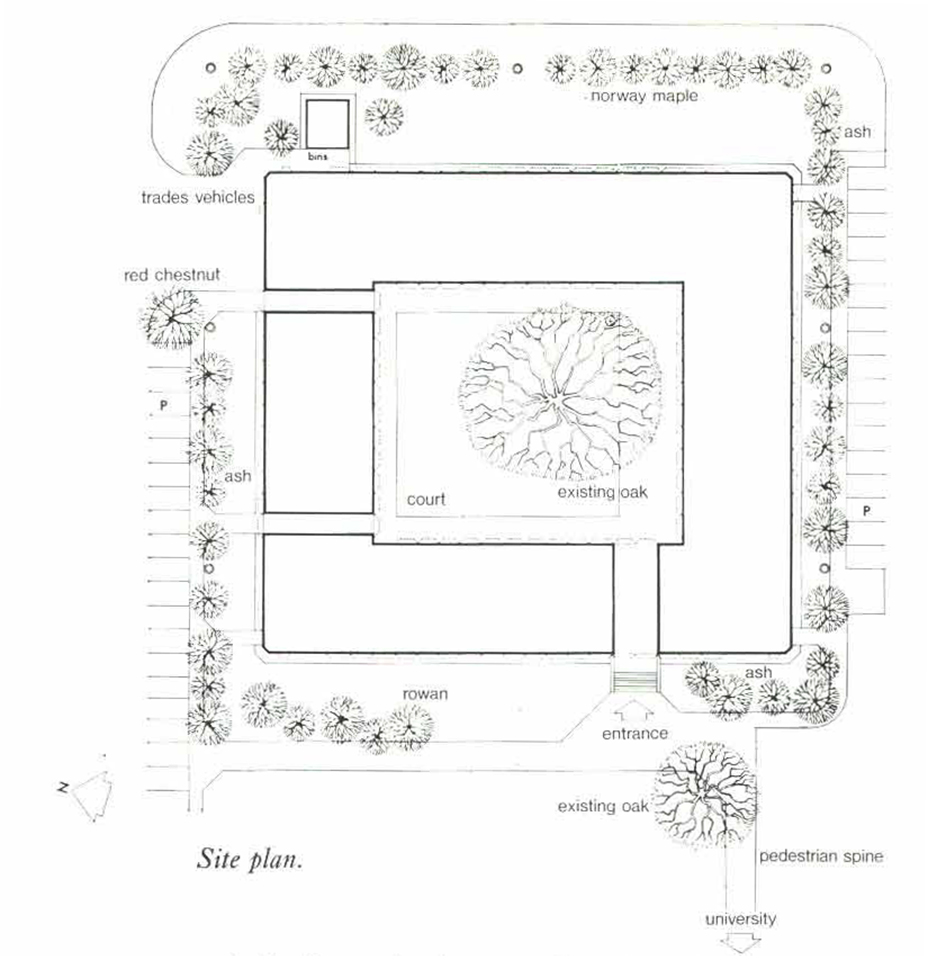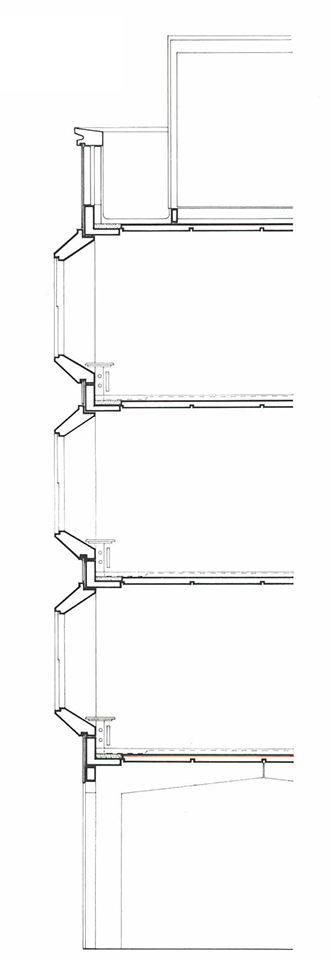County College
1969
The County College at Lancaster University exemplified Roger Booth’s approach to architecture. He was undoubtedly a technologist with rigour, most likely underpinned by his time as a surveyor in the Royal Artillery (1939-41) and as a Chief Engineer in the Royal Engineering Corps (1941-46), designing steel and reinforced concrete bridges in Italy and the Middle East. This experience of the technical aspects of construction shaped his practice in Lancashire and his studies and early career in London and Shropshire. This building was one with which he was heavily involved as the designer and one of which he was enduringly proud [1]. The building was a gift from the county of Lancashire to the new university and an adjunct to the main campus designed by Shepheard and Epstein. It was to align with the setting, but also to be distinctive and to draw on the old university’s model of a college with a quad. This quad was formed around the preservation of two mature oak trees which stand to this day. Within the building, the idea of both the individual and the individual as part of a community was to be expressed through the architecture. Booth used the open cloister as communal space and the oriel windows to each of the study bedrooms to refer to the individual. Technologically, the building was constructed using only 10 separate precast elements as both structure and façade – using the principle of arching, the frame and external panels were combined into a single system. The concrete, intended as a contrast to the brick of the rest of the university, was a high specification as the brief was for a maintenance free building with no painted surfaces that would weather well and have an enduring quality. The concrete was matched to the local stone, used sparingly in public spaces, such as the passage into the quad. In Booth’s words, ‘The character and plan form of the traditional English College [was] combined with the technological, social and educational requirements of the 20th Century’ [2]. Much to Booth’s pride and approval, the building was opened by the Queen on 17th October 1969.
[1] In conversation with Dorothy Booth, Wood End Silverdale, April 2014
[2] County Architect’s Report, April 1971 – March 1973
